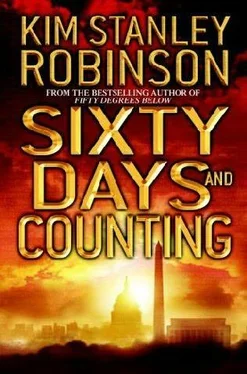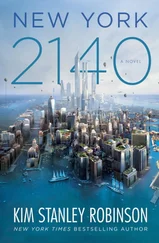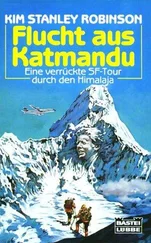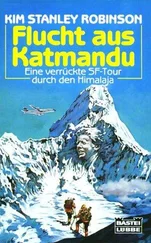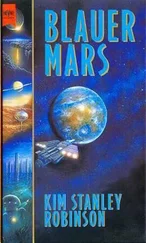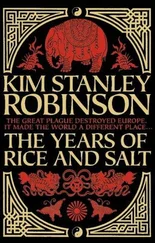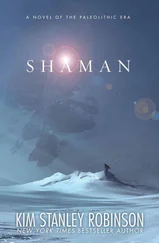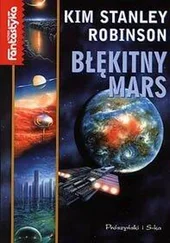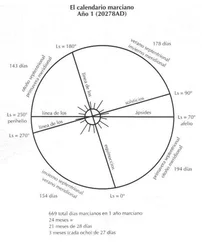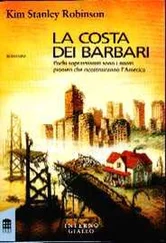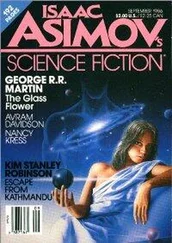But, however, here he was. Time to amp up and ramp up, as they used to say in the window-washing business—often before smoking huge reefers and downing extra-tall cups of 7-Eleven coffee, admittedly—but the point still held. One needed to get psyched and pay attention. Crampons, linesman’s harness, strap around, kick in, deep breath. Up, up, up!
Eyes streaming in the cold wind. Blink several times to clear vision. Through the heavy lowest branches, up to the level under the canopy, where big branches from different trees intertwined. In the wind he could see the independent motion of all the branches. Hard to imagine, offhand, what that might mean in terms of a treehouse. If an extensive treehouse were to rest on branches from more than one tree, wouldn’t it vibrate or bounce at cross-purposes, rather than sway all of a piece, as his little Rock Creek treehouse did? An interference pattern, on the other hand, might be like living in a perpetual earthquake. Not good. What was needed was a big central room, set firmly on one big trunk in the middle, with the other rooms set independently on branches of their own—yes—much like the Swiss Family treehouse at Disneyland. He had heard it was the Tarzan treehouse now, but he wasn’t willing to accept that. Anyway the design was sound. He saw the potential branches, made a first sketch on a little pocket notebook page, hanging there. It could be good.
And yet he wasn’t looking forward to it.
Then he saw that the smallest branches around him were studded with tiny green buds. They were the particular light vivid green that was still new to Frank, that he had never seen in his life until the previous spring, out in Rock Creek Park: deciduous bud green. An East Coast phenomenon. The color of spring. Ah yes: spring! Could spring ever be far behind? The so-called blocked moments, the times of stasis, were never really still at all. Change was constant, whether you could see it or not. Best then to focus on the new green buds, bursting out everywhere.
Thoreau said the same, the next morning. Frank read it aloud: “March fans it, April christens it, and May puts on its jacket and trousers. It never grows up, but is ever springing, bud following close upon leaf, and when winter comes it is not annihilated, but creeps on mole-like under the snow, showing its face occasionally by fuming springs and watercourses.”
Rudra nodded. “Henry sees things. ‘The flower opens, and lo! another year.’”
Thoughts of spring came to Frank often in the days that followed, partly because of the green now all over town, and partly because Chase kept referring to his first sixty days as a new spring. It struck Frank again when he went with Diane and Edgardo over to the White House to witness the dedication of the new solar projects. Phil had ordered that photovoltaic panels be put in place (be put back in place, as Carter had done it in his time) to power the White House. When there was some debate as to which system should be installed, he had instructed them to put in three or four different systems, to make a kind of test.
The purple-blue of the photovoltaic panels was like another kind of spring color, popping out in the snowy flowerbeds. Phil made a little speech, after which he was to be driven to Norfolk naval station; he had already had the Secret Service swap out his transport fleet, so now instead of a line of black SUVs pulling through the security gate, it was a line of black bulletproof Priuses. These looked so small that everyone laughed; they resembled the miniature cars that Shriners drove in parades. Chase laughed hardest of all, jumping out and directing the traffic so that the little cars made a circle around him. As he waved good-bye to the crowd, Frank noticed that he wore two wedding bands, one on his left ring finger, the other on the little finger of his right hand.
The White House demonstration project was only a tiny part of the solar power debate raging through NSF, the Department of Energy, and, Frank supposed, the world at large. Sudden effort to find the holy grail. It looked like desperation, and to a certain extent it was. But it was also that volatile time that came early in the history of any new technology, when decisions about many of the basic structures and methods emerged from a general confusion.
The small scale of this test was not going to be fair to Stirling engines in competition with photovoltaic. PV panels could be scaled to any size, which made them best for home use, while the external heat engine required a group of mirrors big enough to heat the heating element fully and drive the pistons to maximum output. It was a system meant for power plants. So the test here was only a PR thing. Still, not a bad idea. To see the systems creating electricity, even on cloudy days, was suddenly to understand that they had the means for the world’s deliverance already at hand. Paradoxically, the units on the south lawn shifted the attention from technology to finance. Now Chase was talking about tax credits for home installations that were big enough that the cost of a system would be the equivalent of about three years of electricity bills. A subsidy like that would make a huge difference. The cost to the federal budget would be about a tenth the cost of the last war. The main problem then would be manufacturing enough silicon.
One of the workmen scaling the southwest corner of the White House was having trouble, even though belayed from the roof. Frank shook his head, thinking: I could do better than that. Cutter and his friends could do better than that.
Kayaking was fun. The ice had broken up, and Frank, Charlie, and Drepung had joined a program at the Georgetown boathouse which gave them a couple of lessons, and then renting privileges for Charlie and Drepung; Frank had an old blue kayak of his own. Now their routine was to try to meet every other weekend to paddle around, playing on the slight riffles in the Potomac upstream from the Key Bridge. These riffles, however small compared to the drops at Great Falls, nevertheless involved an immense flow of water, and were fun to struggle up and shoot down. They could practice on them until they were good enough for Great Falls, Frank would say. Great Falls had a variety of white-water runs on the Maryland side, spanning a wide range of difficulties. Charlie and Drepung would nod at this information while glancing at each other, in full solidarity to resist any such improvement.
Drepung, it seemed to Charlie, was doing well, despite all the bustle at the embassy; in high spirits because of the move to the farm, and Phil taking office, and probably just the sheer fact of spring. He was young, the cherry blossoms were blossoming, and the Wizards were in the playoffs. He had an iPod that he had programmed with everything from the Dixie Chicks to the Diamond Sutra. Charlie often saw him bopping up their sidewalk in his oversized running shoes, snapping his fingers to some iPodded beat or other, not fast or slow, but in the groove. The bopper with the Betty Boop face, his gaze curiously fresh, direct, warm, open—a kind of hail, or greeting, even a challenge—a look unusual in D.C., the world capital of insincere sincerity.
Now Drepung paddled by and said, “I know that you said that when Phil Chase said to us, I’ll see what I can do, he was only using the usual Washington code for ‘No.’ But I am thinking now that maybe he meant it literally.”
“Could be,” Charlie opined cautiously. “What makes you think so?”
“Well, because he has apparently called up the State Department, and told someone in the South Asia division to get hold of us and set up a meeting with him. There’s even some of the China people to be included in this meeting.”
“Chinese people?”
“No, China people. State Department foreign service people who specialize in China. Sridar has been trying to set up such a meeting with them for months and months, but with no success. And now we have a date and an agenda of topics. And all because of this request from President Chase.”
Читать дальше
Конец ознакомительного отрывка
Купить книгу
